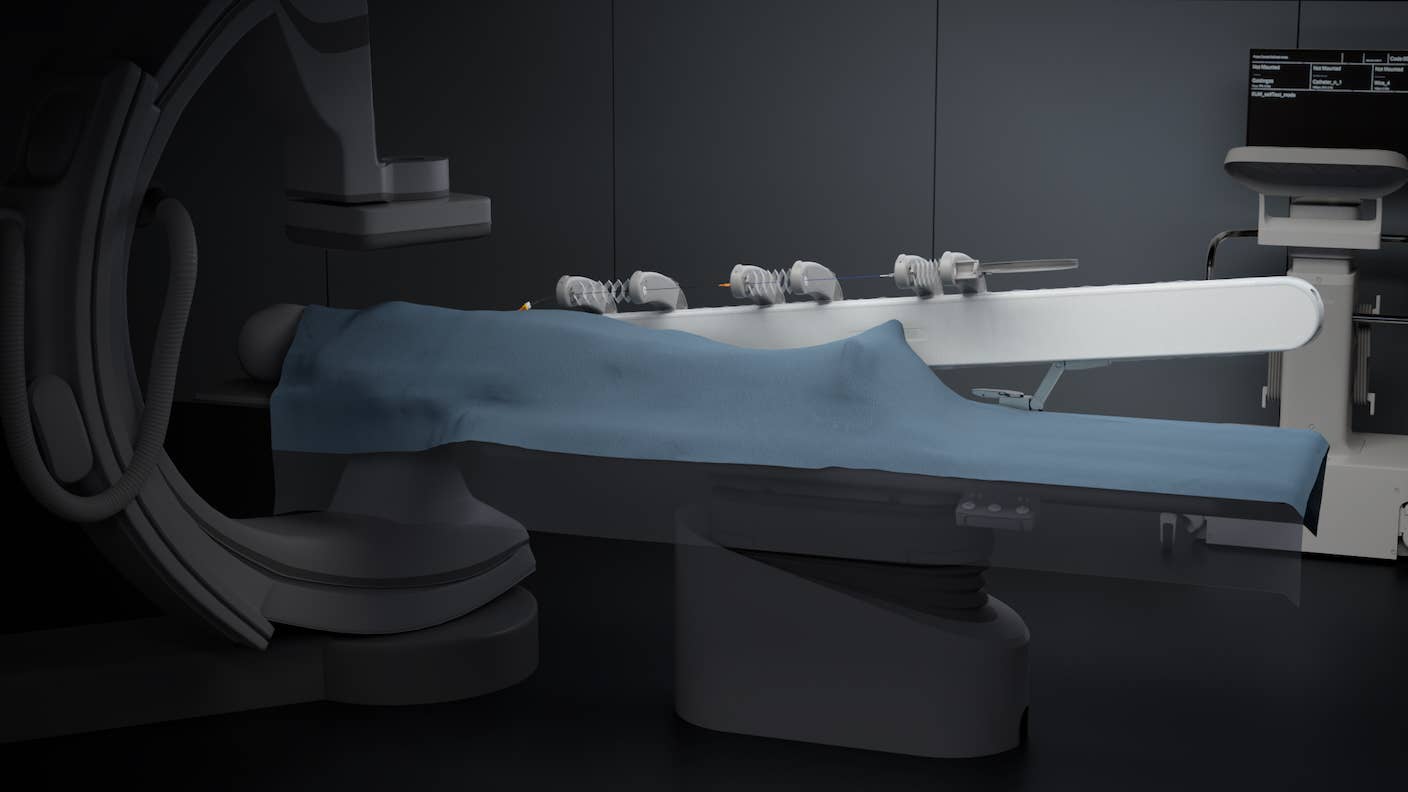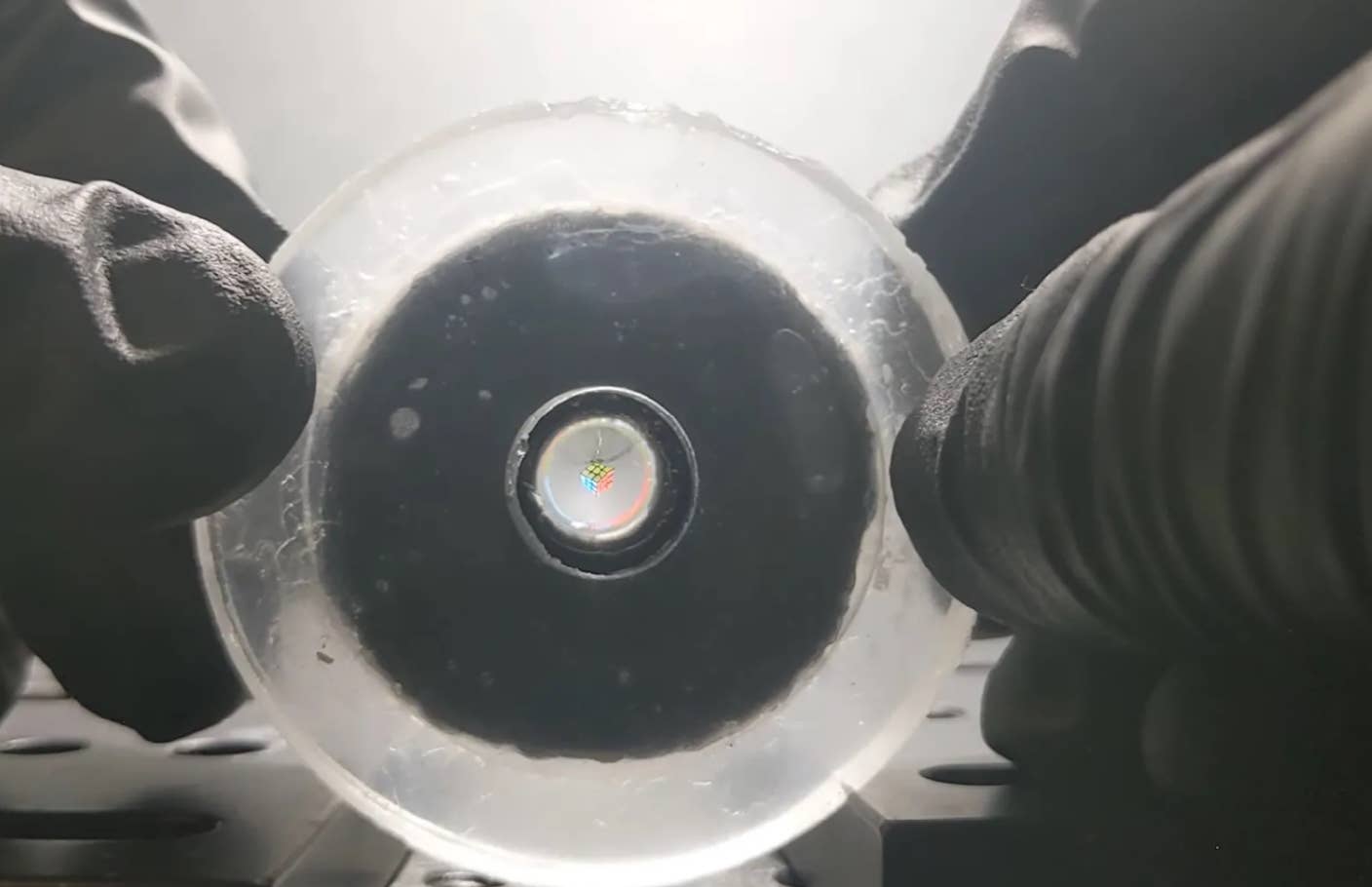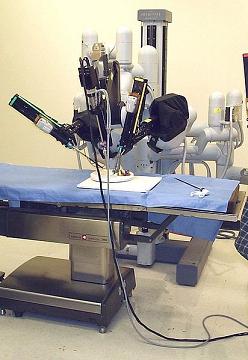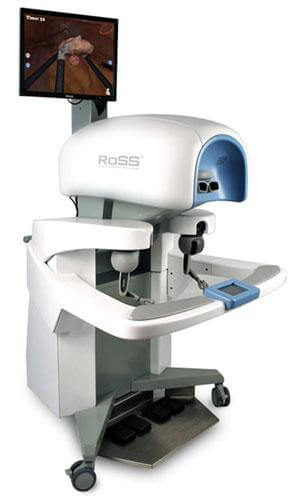Robot Surgery, Thy Name is DaVinci

Share
Robotic surgery is experiencing explosive growth in America’s operating rooms, and the unquestioned industry leader in this field is the DaVinci robot, made by Intuitive Surgical. How pervasive has this robot become? Put it this way, only 14% of prostate surgeries in the US last year took place not using the DaVinci. It has grown from 210 systems seven years ago to 1,395 today. Although typically used for smaller surgeries like prostate removal and hysterectomies, it was recently used for a kidney transplant, and more complicated procedures are expected in the future. The DaVinci is really just the first wave of robotic surgery as technology continues to push clumsy human hands out of the operating room.
Although the business end bears a disquieting resemblance to the torture probe in Star Wars, robot surgery is pretty amazing to watch. There's a TED talk about the DaVinci from a year ago; it’s worth looking at again (after the jump).
The DaVinci is controlled using two joystick-like arms and several foot pedals. These controls move articulated robotic arms that can be fitted with a huge variety of different tools. In a typical surgery, doctors only have to cut a 1-2 cm hole to allow three or four arms to enter into the patient’s body. The controls then convert every five inches of the doctor’s movement to one inch of movement inside the patient, allowing for improved fine motor actions. The doctor sits at a station, often outside the actual operating room, and uses the built in 3-D monitor for vision as he completes the surgery. According to the DaVinci makers, using a robot leads to less tissue trauma, requires fewer surgical assistants, and is less physically taxing for the surgeon.
However, the company line on the DaVinci’s effectiveness is far from the last word. According to a large study of Medicare patients, robotic prostate surgery led to fewer in-hospital complications, but had worse results for impotence and incontinence (I know which one of those bullets I’d choose to take, just saying). Costing a cool $1.7 million, plus a $100,000+ annual service fee, inconclusive results are a bit hard to stomach. There are two reasons why this ostensibly advanced surgical method can lead to mixed results. First, the DaVinci provides no tactile feedback. Doctors have to learn to use the visual environment for clues they would otherwise get by feel. Of course, with the development of haptic feedback, this flaw might be remedied soon.
The second problem is that it just takes time to get used to a whole new way of performing surgery. To help with that problem, Simulated Surgical Systems has recently unveiled the RoSS surgical simulator. The simulator is modeled on the DaVinci and allows aspiring robo-surgeons to practice their technique with virtual patients before dealing with the real thing.
DaVinci has also made waves with its decision to direct its marketing towards consumers, in some cases even taking out billboard ads. Hospitals and doctors report having to buy the machines out of necessity, after losing so many patients to other hospitals that offer the robotic procedure. I find it telling that patients are so demanding of this new technology. Scientists worry about the public’s reaction to future advances in genetic engineering and stem-cell research, but patients seem perfectly fine with using a robot to perform surgery, even if the doctor isn’t in the room.
Be Part of the Future
Sign up to receive top stories about groundbreaking technologies and visionary thinkers from SingularityHub.


And while the doctor might currently not be in the room, in the future he may not even be in the country. Way back in 2001 US surgeons used a DaVinci predecessor system to perform a gall bladder surgery in France, via a secured fiber-optic connection. Although this hasn’t seemed to have caught on in regular hospital use, the US military is currently developing “trauma pods” based on a scaled down version of the DaVinci. Front line troops would carry these into battle, allowing doctors to perform complex operations while safely at base.
These systems are pointing us towards the future of surgery, which will use smaller and smaller tools to make operations less invasive, more precise, and more effective. We’re not going to get to nanobot based medicine overnight, but the DaVinci is part of the bridge that will get us there.
Image credits: wikicommons, simulated surgical systems
Sources: chattanooga times, ny times
Steven Wasick lands on the moon...
Related Articles

In Wild Experiment, Surgeon Uses Robot to Remove Blood Clot in Brain 4,000 Miles Away

A Squishy New Robotic ‘Eye’ Automatically Focuses Like Our Own

This Crawling Robot Is Made With Living Brain and Muscle Cells
What we’re reading

